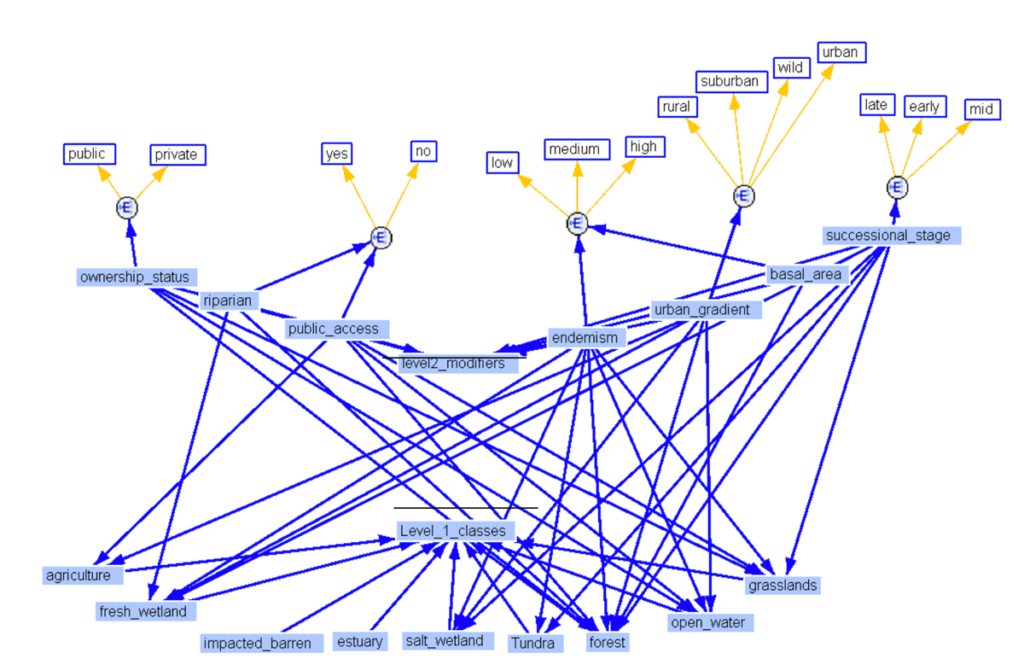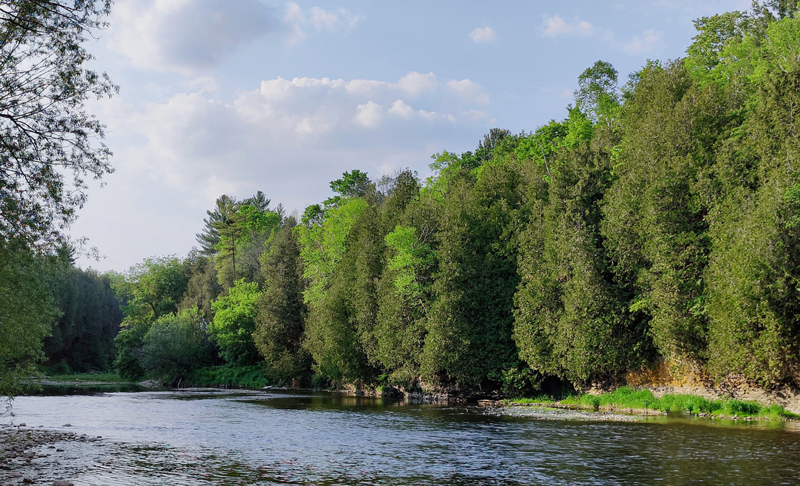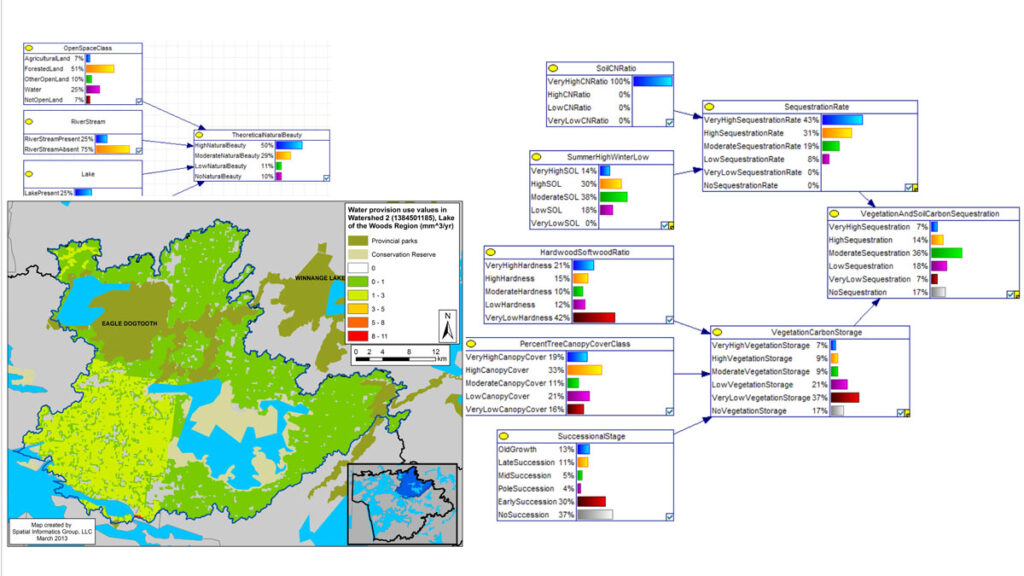Close
Close
Case Study
In analyzing the provincial parks system in Ontario, Canada, SIG compared two different methodologies for quantifying and assessing the flow of ecosystem services in order to explore new frameworks for management.


MNR teamed up with Spatial Informatics Group to execute this ambitious project. Two parks–Algonquin Provincial Park and Lake of the Woods–were chosen as study areas within which to test two approaches to understanding ecosystem services.
One was the traditional and widely used “value transfer” approach that imputes the value of ecosystem services from a landscape by comparing it with similar areas where economic valuation studies have been performed. The other approach was to use the AI-based ARIES (Artificial Intelligence for Ecosystem Services) system to quantify spatial connections between ecosystems and their beneficiaries. This more rigorous approach determines both value and spatial relationships.

